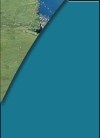Not far from Dromore Lake stand the remains of a 15th century church.
The votive chapel and tomb were built by Dermot O'Kerine of Owan.
(O'Dea's hermitage)
This ancient monastic site has the remains of a Romanesque church and round
tower, (12th century). The foundation is credited to St. Tola (d. 737). The
White Cross of Tola is a impressive high cross with an imposing episcopal
figure on the east face, surmounted by a crucifixion.
An important battle was fought on this very site in which Muircheartach O'Brien
defeated Richard de Clare of Bunratty and halted the Anglo- Norman take-over of
Clare. The de Clares subsequently lost Bunratty and its surrounding territory(1318).
Now a substantial ruin, was founded by Sioda Cam MacNamara and built between
1433 and 1450. It integrates parts of a castle built by Thomas de Clare of
Bunratty and destroyed by Irish forces in 1286. The monastic buildings are
grouped round an attractive cloister and there is a tall, elegant tower. The
friars were expelled in Elizabethan Times and attempted to return after the
Queen's death, but to no avail.
They remained in the area until the beginning of the 19th century.
To the North of Sixmilebridge are the remains of Filoe Church, dated from the
11th century, which has Romanesque carvings.
1.5 km north of Clarecastle, are the ruins of a priory of Canons Regular of St.
Augustine, founded in 1189 by King Donal Mor O'Brien. The abbey was occupied until about 1650.
(Cill Eoin - St. John's Church)
The remains of an Augustinian nunnery dedicated to St. John, founded by Donal
Mor O'Brien, King of Limerick 1180. The holy well of St. John nearby was a
place of pilgrimage. The buildings are in a picturesque setting on the banks
of Killone lake. Killone Abbey lies in the grounds of Newhall House, designed by
Francis Bindon (1690- 1765) for Charles Mc Donnell, M.P. for Clare in the 18th century.
 Founded by the O'Brien family in 1250 for the Franciscan Order, the abbey was restored in
about 1300 by Turlough Mor O'Brien (who added the strikingly tall east window
with its five slender lights and pointed top.) There is a good deal of
interesting sculpture and its monuments are famous, especially the McMahon
tomb, (15th century), with its carvings of the Passion.
Founded by the O'Brien family in 1250 for the Franciscan Order, the abbey was restored in
about 1300 by Turlough Mor O'Brien (who added the strikingly tall east window
with its five slender lights and pointed top.) There is a good deal of
interesting sculpture and its monuments are famous, especially the McMahon
tomb, (15th century), with its carvings of the Passion.
(church of the hermitage)
(22 km south-west of Ennis), is named after St. Murthaile, who had a
hermitage there. The remains of a medieval parish church with dwelling tower can be seen.
There are a number of islands in the Fergus Estuary including Inis Gad, or
Canon Island. It has a ruined, early 13th century priory (St. Mary's) of the
Canons Regular of St. Augustine, founded by King Donal Mor 0'Brien of Limerick.
The remains comprise of a church, cloisters, kitchen and refectory, with dormitory overhead.
(Cill lomair - Church of St. lomar)
St. lomar was a contemporary of St. Senan of Scattery Island (6th century).
The village has a holy well and flagstone connected with the saint.
(Inis Cathaigh)
2.5 km from the mainland, reached by taking a boat from Cappagh Pier.
St. Senan founded a monastery in the 6th century, which did not survive the
Viking raids intacted (9th and 10th centuries). The remains include several
churches dating from the 9th to the 15th centuries and a well preserved round
tower. The island was recaptured by Brian Boru after a century of Viking occupation.
Nearby, in Moneen church the Little Ark, a moveable wooden shelter is preserved.
It was devised by Fr. Michael Mechan in 1852 so that mass could be taken on the
foreshore between high and low water where severe property laws could not be
enforced by the bigoted local landlord who strived to prevent Catholic practises in the area.
Not far from the Bridges of Ross are the ruins of Kilballyowen parish church,
and Doondillroe promontory fort.
The spectacular cliff scenery on the road to Kilkee includes a column of rock,
known as Bishop's Island. On its summit are the ruins of an ancient oratory,
which indicates that the column was part of the mainland at one time.
Previous
|


 Founded by the O'Brien family in 1250 for the Franciscan Order, the abbey was restored in
about 1300 by Turlough Mor O'Brien (who added the strikingly tall east window
with its five slender lights and pointed top.) There is a good deal of
interesting sculpture and its monuments are famous, especially the McMahon
tomb, (15th century), with its carvings of the Passion.
Founded by the O'Brien family in 1250 for the Franciscan Order, the abbey was restored in
about 1300 by Turlough Mor O'Brien (who added the strikingly tall east window
with its five slender lights and pointed top.) There is a good deal of
interesting sculpture and its monuments are famous, especially the McMahon
tomb, (15th century), with its carvings of the Passion.